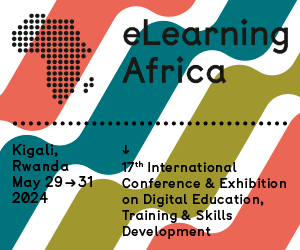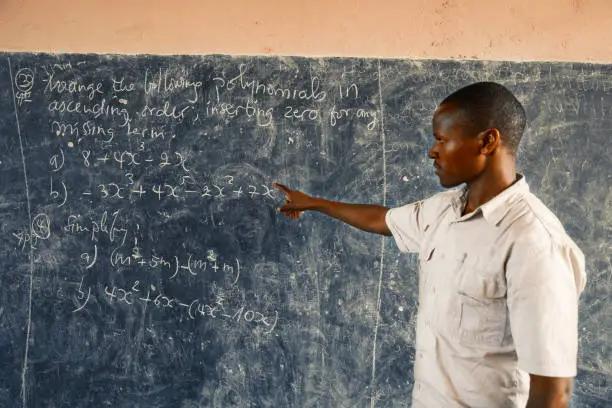There’s a huge problem with math education right now! Basically, no one seems to have a comprehensive diagnosis of the problem (is it possible?).
To learners, they think it’s disconnected, uninteresting and difficult.
Teachers are frustrated!
Those that “survived” the subject at various levels can’t apply what they’ve learnt because they think they don’t know enough.
Governments realize that it’s a big problem but don’t know how to solve it.
With the fast-evolving world and technological advancements, math is now more important to the world than at any point in human history.
Here is the summary, at one end we have a fast-falling interest in math education, and at the other end we have a more mathematical world, a more quantitative world than we have ever had.
What does math look like in the real world and what does it look like in education?
In the real-world, math isn’t necessarily done by mathematicians! Surprised?! It’s done by geologists, engineers, biologists, all sorts of different people – modeling and simulation. However, in education it looks very different – lots of calculating, mostly by hand.
One thing I’ve personally observed is the restriction of mathematics and its usage to the pages of textbooks and worksheets by a lot of teachers and students.
So, let’s ask some questions…
What is math?
What do we mean when we say we’re doing math, or educating people to do math?
The question that needs urgent attention should be, “how do we productively apply mathematics in this technologically advanced era?
Mathematics is a fundamental subject that plays an essential role in our daily lives. Technology has revolutionized the way we learn and teach mathematics, making it more accessible and engaging for students of all ages. With the help of technology, teachers can create interactive lessons that enhance mathematical proficiency and improve students’ understanding of complex concepts.
Crucial point here: math is not equal to calculating! Math is a much broader subject than calculating. It is understandable that this has all got intertwined over hundreds of years. There was only one way to do calculating and that was by hand, which turned out to be a pain to many students, hence the sharp decline in interest for the subject.
An estimation done a decade ago revealed that across the world, we’ve used about 106 average world lifetimes teaching people how to calculate by hand. Wow!
Why not embrace technology in solving mathematical problems? Why deprive students of using technology? Students are discouraged from using calculators at the very least! The current “worry” is how to stop students from using AI instead of preparing students to use it for maximum productivity.
The problem we have to deal with is how to efficiently use the technological tools we now have all around us. The effective use of technology in mathematics is directly proportional to the depth in conceptual understanding of mathematics.

Few steps;
STEP 1: What is it that we want to ask?
STEP 2: Turning a real-world problem into a math problem – math formulation.
STEP 3: Computations.
STEP 4: Turning it from mathematical form back to the real-world application.
In math education, we’re spending about 80 percent of the time teaching people to do step three by hand. Yet, that’s the one step computers can do better than any human after years of practice. Instead, we ought to be using computers to do step three and using the students to spend much more effort on learning how to do steps 1, 2 and 4 – conceptualizing problems, applying them and getting the teacher to run them through how to do that.
Digital Tools
Digital tools have become an integral part of modern education, and they offer several benefits for enhancing mathematical proficiency. For example, graphing calculators allow students to visualize functions and equations in real-time, making it easier for them to understand complex mathematical concepts. Similarly, spreadsheets can be used to create interactive math models, allowing students to experiment with different variables and see how changes affect the outcome.
Other digital tools that can enhance mathematical proficiency include online math games, virtual manipulatives, and educational apps. These tools make learning math fun and engaging, encouraging students to practice and develop their skills outside of the classroom.
Educational Software
Educational software is another powerful tool for enhancing mathematical proficiency. These programs are designed to provide interactive and engaging learning experiences that cater to different learning styles. Some educational software focuses on specific math topics, such as geometry or algebra, while others offer comprehensive math curriculums.
One of the advantages of educational software is that it allows students to learn at their own pace and provides immediate feedback on their progress. This helps students identify areas where they need improvement and focus their efforts accordingly.
Challenges and Limitations
While technology offers numerous benefits for enhancing mathematical proficiency, there are also challenges and limitations to consider. One of the challenges is ensuring that students have access to the necessary technology and training to use it effectively. This can be particularly challenging for schools with limited resources or students from disadvantaged backgrounds.
Another limitation is that technology cannot replace the value of face-to-face interaction between teachers and students. While digital tools and online resources can supplement classroom instructions, they cannot replace the guidance and support provided by a skilled teacher. It is important to strike a balance between technology and traditional teaching methods to ensure that students receive a well-rounded education.
In conclusion, technology has revolutionized the way we learn and teach mathematics, offering numerous benefits for enhancing mathematical proficiency. Digital tools, online resources, and educational software can be used to create interactive and engaging learning experiences that cater to different learning styles. However, it is important to consider the challenges and limitations of technology and strike a balance between digital tools and traditional teaching methods.
By leveraging the power of technology, we can create a more inclusive and accessible learning environment that helps students develop the mathematical proficiency they need to succeed in the 21st century.











